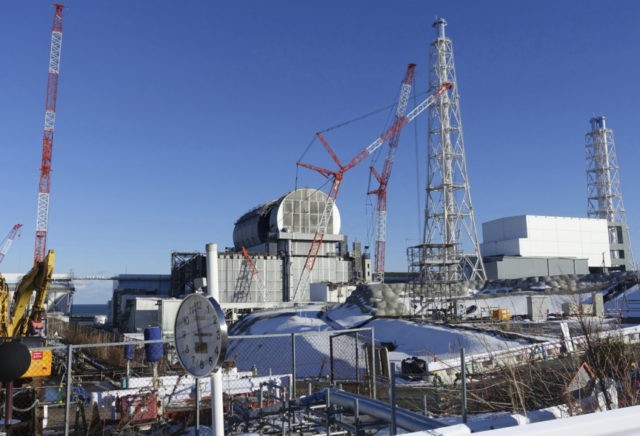Tokyo Electric Power Co. (TEPCO) workers began removing spent fuel rods from a cooling pool in the destroyed Fukushima Daiichi Nuclear Power Plant on Monday, the first major step in disposing of the highly radioactive material left in the plant after a tsunami ravaged it in 2011.
The move follows a visit to the plant by Prime Minister Shinzo Abe this weekend to highlight the progress TEPCO is allegedly making in cleaning up the nuclear waste at the plant in anticipation for the 2020 Summer Olympics in Tokyo. It also follows the eighth anniversary of the tsunami and subsequent nuclear disaster in March 2011, considered the second-worst nuclear disaster of its kind after the 1986 Chernobyl nuclear meltdown.
The Japanese government lifted restrictions on traveling to some of the towns surrounding the plant last week, inviting displaced locals to rebuild. While some were eager to see their hometowns, many have reinvented their lives elsewhere and are likely never to return. An estimated 160,000 fled Fukushima prefecture in the aftermath of the meltdown.
TEPCO invited reporters to witness the beginning of the removal of intact fuel rods from the cooling pool at Unit 3 in the damaged Fukushima plant. To remove the rods, workers stationed about a third of a mile from the plant operate a crane and lift the fuel out of the pool. The fuel cannot touch air, however, so the process occurs completely underwater. TEPCO counts 566 fuel rods in Unit 3 which will take at least two years to remove.
After removing the intact rods, operators must work to remove the 800 tons of fuel from rods that burst, which is highly radioactive and dangerous. “Removing fuel units from the cooling pools comes ahead of the real challenge of removing melted fuel from inside the reactors, but details of how that might be done are still largely unknown,” Australia’s ABC notes.
The lack of specific planning for how to complete the most onerous part of the clean-up may be among the factors keeping many Japanese from returning home despite TEPCO’s assurances that some areas are once again habitable. The electric utility has faced years of criticism for its mishandling of the disaster and has admitted to lying and a “cover-up” of the true extent of the damage in the immediate aftermath of the tsunami.
As a result, as of March only 23 percent of the displaced have returned home despite many towns being declared safe since 2014 and the government announcing this month that over 90 percent of public housing projects for disaster victims are complete, and that the number of displaced has plummeted since 2011.
Those numbers might soon change given the reopening of areas close to the plant. Government officials reopened the town of Okuma, one of two towns the nuclear plant spans, last week for the first time since 2011. While parts of the town remain off limits, officials allowed many former residents to return to western Okuma and recently completed the construction of a new town hall. The Japanese newspaper Asahi Shimbun reported that the town’s public servants expected 500 people to return to their homes of the 11,500 population that existed there before the meltdown. Another 700 people – TEPCO employees working on cleaning up the plant – live there now.
Prime Minister Shinzo Abe visited Okuma this weekend to attend the opening of the new town hall and visit a soccer field where the Olympic torch relay will begin next year. He then visited the nuclear power plant, from which he promised his government would “do its utmost to rebuild (this area), engraving in our heart once again that each minister is in charge of reconstruction.” Asahi noted that he wore a suit with no protective clothing for radiation to inspire confidence that levels had dropped.
As recently as a month ago, local towns appeared destined to remain deserted save for their elderly population. Nearly half of those living in some Fukushima towns and villages were over 65 as of March. Okuma was being protected by a freelance group known as the “Old Men Squad,” many former local government employees who volunteered to keep young men from the job of having to keep the town clean and protect it from crime and be exposed to radiation. As Mainichi reported:
The team went into Okuma every day in rotation and worked to maintain public facilities as well as to help evacuees who were worried about their homes by carrying out tasks such as confirming gas valves were closed and disposing of gasoline left behind. Group member Tsunemitsu Yokoyama, 66, former head of the restoration work department at the Okuma Municipal Government, said, “We did everything we thought was necessary.”
The group has now retired.

COMMENTS
Please let us know if you're having issues with commenting.